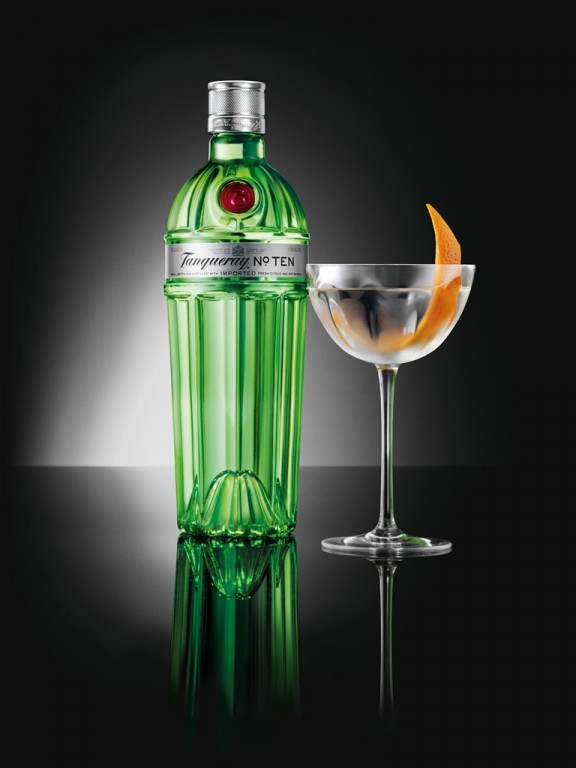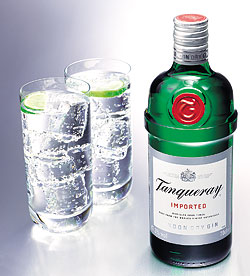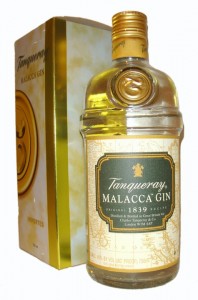
by Adam Hartung | Apr 25, 2015 | Defend & Extend, Food and Drink, In the Rapids, In the Swamp, Innovation, Leadership, Transparency
If you don’t drink gin you may not know the brand Tanqueray, a product owned by Diageo. But Tanqueray has been around for almost 190 years, going back to the days when London Dry Gin was first created. Today Tanqueray is one of the most dominant gin brands in the world, and the leading brand in the USA.
 But gin is not a growth category. And Tanqueray, despite its great product heritage and strong brand position, has almost no growth prospects.
But gin is not a growth category. And Tanqueray, despite its great product heritage and strong brand position, has almost no growth prospects.
Any product that doesn’t grow sales cannot generate profits to spend on brand maintenance. Firstly, if due to nothing more than inflation, costs always go up over time. It takes rising sales to offset higher costs. Additionally, small competitors can niche the market with new products, cutting into leader sales. And competitors will undercut the leader’s price to steal volume/share in a stagnant market, causing margin erosion.
Category growth stalls are usually linked to substitute products stealing share in a larger definition of the marketplace. For example sales of laptop/desktop PCs stalled because people are now substituting tablets and smartphones. The personal technology market is growing, but it is in the newer product category stealing sales from the older product category.
This is true for gin sales, because older drinkers – who dominate today’s gin market – are drinking less spirits, and literally dying from old age. In the overall spirits market, younger liquor drinkers have preferred vodkas and flavored vodkas which are “smoother,” sweeter, and perceived as “lighter.”

So, what is a brand manager to do? Simply let trends obsolete their product line? Milk their category and give up money for investing somewhere else?
That may sound fine at a corporate level, where category portfolios can be managed by corporate vice presidents. But if you’re a brand manager and you want to become a future V.P., managing declining product sales will not get you into that promotion. And defending market share with price cuts, rebates and deals will cut into margin, ruin the brand position and likely kill your marketing career.
Keith Scott is the Senior Brand Manager for Tanqueray, and his team has chosen to regain product growth by using sustaining innovations in a smart way to attract new customers into the gin category. They are looking beyond the currently dwindling historical customer base of London Dry Gin drinkers, and working to attract new customers which will generate category growth and incremental Tanqueray sales. He’s looking to build the brand, and the category, rather than get into a price war.
Building on demographic trends, Tanqueray’s brand management is targeting spirit drinkers from 28-38. Three new Tanqueray brand extensions are being positioned for greatest appeal to increasingly adult tastes, while offering sophistication and linkage to one of the longest and strongest spirits brands.
 #1 – Tanqueray Rangpur is a highly citrus-flavored gin taking a direct assault on flavored vodkas. Although still very much a gin, with its specific herb-based taste, Rangpur adds a hefty, and uniquely flavored, dose of lime. This makes for a fast, easy to prepare gin and tonic or lime-based gimlet – 2 classic cocktails that have their roots in England but have been popular in the US since before prohibition. And, in defense of the brand, Rangpur is priced about 10-20% higher than London Dry.
#1 – Tanqueray Rangpur is a highly citrus-flavored gin taking a direct assault on flavored vodkas. Although still very much a gin, with its specific herb-based taste, Rangpur adds a hefty, and uniquely flavored, dose of lime. This makes for a fast, easy to prepare gin and tonic or lime-based gimlet – 2 classic cocktails that have their roots in England but have been popular in the US since before prohibition. And, in defense of the brand, Rangpur is priced about 10-20% higher than London Dry.
 #2 – Tanqueray Old Tom and Tanqueray Milacca appeal to the demographic that loves specialty, crafted products. The “craft” product movement has grown dramatically, and nowhere more powerfully than amongst 28-42 year old beer drinkers. Old Tom and Milacca leverage this trend. Both are “retro” products, harkening to gins over 100 years ago. They are made in small batches and have limited availability. They are targeted at the consumer that wants something new, unique, unusual and yet tied to old world notions of hand-made production and high quality. These craft products are priced 25-35% higher than traditional London Dry.
#2 – Tanqueray Old Tom and Tanqueray Milacca appeal to the demographic that loves specialty, crafted products. The “craft” product movement has grown dramatically, and nowhere more powerfully than amongst 28-42 year old beer drinkers. Old Tom and Milacca leverage this trend. Both are “retro” products, harkening to gins over 100 years ago. They are made in small batches and have limited availability. They are targeted at the consumer that wants something new, unique, unusual and yet tied to old world notions of hand-made production and high quality. These craft products are priced 25-35% higher than traditional London Dry.
#3 – Tanqueray No. 10 is a “super-premium” product pointed at the customer who wants to project maximum sophistication and wealth. No 10 uses a special manufacturing process creating a uniquely smooth and slightly citrus flavor. But this process loses 40% of the product to “tailings” compared to the industry standard 10% loss. No. 10 is the high-end defense of the Tanqueray brand (a “top shelf” product as its known in the industry) priced 75-90% higher than London Dry.

No. 10 is being promoted with “invitation only” events being held in major U.S. cities such as New York, Chicago and Atlanta. No. 10 “trunk events” bring in some of the hottest, newest designers to showcase the latest in apparel trends, accompanied by hot, new musical talent. No. 10 is associated with the sophistication of super-premium brands – individualized and rare products – in a members-only environment. Targeted at the primary demographic of 28-38, No. 10 events are designed to lure these consumers to this product they otherwise might overlook .
Rather than addressing their gin category growth stall with price cuts and other sales incentives, which would lead to brand erosion, price erosion, and margin erosion, the Tanqueray brand team is leveraging trends to bring new consumers to their category and generate profitable growth. These innovative brand extensions actually build brand value while leveraging identifiable market trends. Notice that all these sustaining innovations are actually priced higher than the highest volume London Dry core product, thus augmenting price – and hopefully margin.
Too often leaders see their market stagnate and use that as an excuse lower expectations and accept sales decline. They don’t look beyond their core market for new customers and sources of growth. They react to competition with the blunt axe of pricing actions, seeking to maintain volume as margins erode and competition intensifies. This accelerates product genericization, and kills brand value.
The Tanqueray brand team demonstrates how critical sustaining innovation can be for maintaining growth at all levels of an organization. Even the level of a single product or brand. They are using sustaining innovations to lure in new customers and grow the brand umbrella, while growing the category and achieving desired price realization. This is a lesson many brands, and companies, should emulate.
by Adam Hartung | Oct 4, 2012 | Defend & Extend, In the Whirlpool, Leadership, Lifecycle, Web/Tech
If you're still an investor in Hewlett Packard you must be new to this blog. But for those who remain optimistic, it is worth reveiwing why Ms. Whitman's forecast for HP yesterday won't happen. There are sound reasons why the company has lost 35% of its value since she took over as CEO, over 75% since just 2010 – and over $90B of value from its peak.
HP was dying before Whitman arrived
I recall my father pointing to a large elm tree when I was a boy and saying "that tree will be dead in under 2 years, we might as well cut it down now." "But it's huge, and has leaves" I said. "It doesn't look dead." "It's not dead yet, but the environmental wind damage has cost it too many branches, the changing creek direction created standing water rotting its roots, and neighboring trees have grown taking away its sunshine. That tree simply won't survive. I know it's more than 3 stories tall, with a giant trunk, and you can't tell it now – but it is already dead."
To teach me the lesson, he decided not to cut the tree. And the following spring it barely leafed out. By fall, it was clearly losing bark, and well into demise. We cut it for firewood.
Such is the situation at HP. Before she became CEO (but while she was a Director – so she doesn't escape culpability for the situation) previous leaders made bad decisions that pushed HP in the wrong direction:
- Carly Fiorina, alone, probably killed HP with the single decision to buy Compaq and gut the HP R&D budget to implement a cost-based, generic strategy for competing in Windows-based PCs. She sucked most of the money out of the wildly profitable printer business to subsidize the transition, and destroy any long-term HP value.
- Mark Hurd furthered this disaster by further investing in cost-cutting to promote "scale efficiencies" and price reductions in PCs. Instead of converting software products and data centers into profitable support products for clients shifting to software-as-a-service (SAAS) or cloud services he closed them – to "focus" on the stagnating, profit-eroding PC business.
- His ill-conceived notion of buying EDS to compete in traditional IT services long after the market had demonstrated a major shift offshore, and declining margins, created an $8B write-off last year; almost 60% of the purchase price. Giving HP another big, uncompetitive business unit in a lousy market.
- His purchase of Palm for $1.2B was a ridiculous price for a business that was once an early leader, but had nothing left to offer customers (sort of like RIM today.) HP used Palm to bring out a Touchpad tablet, but it was so late and lacking apps that the product was recalled from retailers after only 49 days. Another write-off.
- Leo Apotheker bought a small Enterprise Resource Planning (ERP) software company – only more than a decade after monster competitors Oracle, SAP and IBM had encircled the market. Further, customers are now looking past ERP for alternatives to the inflexible "enterprise apps" which hinder their ability to adjust quickly in today's rapidly changing marektplace. The ERP business is sure to shrink, not grow.
Whitman's "Turnaround Plan" simply won't work
Meg is projecting a classic "hockey stick" performance. She plans for revenues and profits to decline for another year or two, then magically start growing again in 3 years. There's a reason "hockey stick" projections don't happen. They imply the company is going to get a lot better, and competitors won't. And that's not how the world works.
Let's see, what will likely happen over the next 3 years from technology advances by industry leaders Apple, Android and others? They aren't standing still, and there's no reason to believe HP will suddenly develop some fantastic mojo to become a new product innovator, leapfrogging them for new markets.
- Meg's first action is cost cutting – to "fix" HP. Cutting 29,000 additional jobs won't fix anything. It just eliminates a bunch of potentially good idea generators who would like to grow the company. When Meg says this is sure to reduce the number of products, revenues and profits in 2013 we can believe that projection fully.
- Adding features like scanning and copying to printers will make no difference to sales. The proliferation of smart devices increasingly means people don't print. Just like we don't carry newspapers or magazines, we don't want to carry memos or presentations. The world is going digital (duh) and printing demand is not going to grow as we read things on smartphones and tablets instead of paper.
- HP is not going to chase the smartphone business. Although it is growing rapidly. Given how late HP is to market, this is probably not a bad idea. But it begs the question of how HP plans to grow.
- HP is going not going to exit PCs. Too bad. Maybe Lenovo or Dell would pay up for this dying business. Holding onto it will do HP no good, costing even more money when HP tries to remain competitive as sales fall and margins evaporate due to overcapacity leading to price wars.
- HP will launch a Windows8 tablet in January targeted at "enterprises." Given the success of the iPad, Samsung Galaxy and Amazon Kindle products exactly how HP will differentiate for enterprise success is far from clear. And entering the market so late, with an unproven operating system platform is betting the market on Microsoft making it a success. That is far, far from a low-risk bet. We could well see this new tablet about as successful as the ill-fated Touchpad.
- Ms. Whitman is betting HP's future (remember, 3 years from now) on "cloud" computing. Oh boy. That is sort of like when WalMart told us their future growth would be "China." She did not describe what HP was going to do differently, or far superior, to unseat companies already providing a raft of successful, growing, profitable cloud services. "Cloud" is not an untapped market, with companies like Oracle, IBM, VMWare, Salesforce.com, NetApp and EMC (not to mention Apple and Amazon) already well entrenched, investing heavily, launching new products and gathering customers.
HPs problems are far deeper than who is CEO
Ms. Whitman said that the biggest problem at HP has been executive turnover. That is not quite right. The problem is HP has had a string of really TERRIBLE CEOs that have moved the company in the wrong direction, invested horribly in outdated strategies, ignored market shifts and assumed that size alone would keep HP successful. In a bygone era all of them – from Carly Fiorina to Mark Hurd to Leo Apotheker – would have been flogged in the Palo Alto public center then placed in stocks so employees (former and current) could hurl fruit and vegetables, or shout obscenities, at them!
Unfortately, Ms. Whitman is sure to join this ignominious list. Her hockey stick projection will not occur; cannot given her strategy.
HP's only hope is to sell the PC business, radically de-invest in printers and move rapidly into entirely new markets. Like Steve Jobs did a dozen years ago when he cut Mac spending to invest in mobile technologies and transform Apple. Meg's faith in operational improvement, commitment to existing "enterprise" markets and Microsoft technology assures HP, and its investors, a decidedly unpleasant future.

 But gin is not a growth category. And Tanqueray, despite its great product heritage and strong brand position, has almost no growth prospects.
But gin is not a growth category. And Tanqueray, despite its great product heritage and strong brand position, has almost no growth prospects. #1 – Tanqueray Rangpur is a highly citrus-flavored gin taking a direct assault on flavored vodkas. Although still very much a gin, with its specific herb-based taste, Rangpur adds a hefty, and uniquely flavored, dose of lime. This makes for a fast, easy to prepare gin and tonic or lime-based gimlet – 2 classic cocktails that have their roots in England but have been popular in the US since before prohibition. And, in defense of the brand, Rangpur is priced about 10-20% higher than London Dry.
#1 – Tanqueray Rangpur is a highly citrus-flavored gin taking a direct assault on flavored vodkas. Although still very much a gin, with its specific herb-based taste, Rangpur adds a hefty, and uniquely flavored, dose of lime. This makes for a fast, easy to prepare gin and tonic or lime-based gimlet – 2 classic cocktails that have their roots in England but have been popular in the US since before prohibition. And, in defense of the brand, Rangpur is priced about 10-20% higher than London Dry. #2 – Tanqueray Old Tom and Tanqueray Milacca appeal to the demographic that loves specialty, crafted products. The “craft” product movement has grown dramatically, and nowhere more powerfully than amongst 28-42 year old beer drinkers. Old Tom and Milacca leverage this trend. Both are “retro” products, harkening to gins over 100 years ago. They are made in small batches and have limited availability. They are targeted at the consumer that wants something new, unique, unusual and yet tied to old world notions of hand-made production and high quality. These craft products are priced 25-35% higher than traditional London Dry.
#2 – Tanqueray Old Tom and Tanqueray Milacca appeal to the demographic that loves specialty, crafted products. The “craft” product movement has grown dramatically, and nowhere more powerfully than amongst 28-42 year old beer drinkers. Old Tom and Milacca leverage this trend. Both are “retro” products, harkening to gins over 100 years ago. They are made in small batches and have limited availability. They are targeted at the consumer that wants something new, unique, unusual and yet tied to old world notions of hand-made production and high quality. These craft products are priced 25-35% higher than traditional London Dry.


